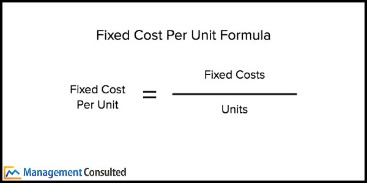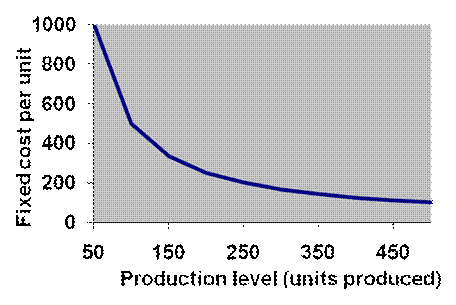Content
But your goal isn’t necessary to follow the accounting status quo. You can clean up your general ledger by taking the single account approach to department tagging as long as you have a software solution that can automate the process and help you slice the data as needed. For an accountant, it might be easiest to create multiple GL accounts. That way, they can automate payroll allocations with an HRIS and then prepare journal entries in a tool like Quickbooks or Xero for the separate accounts. Department tagging makes a significant difference in the effectiveness of financial reporting. It’s the only way you’re able to dig in and view your P&L at the department level.
- On rare occasions it is necessary to send out a strictly service related announcement.
- But if you are starting from scratch, then the following is great place to start.
- His month-end income statement could get no more detailed than that one account.
- In this article, Toptal Finance Expert Scott Hoover demonstrates how to set up a chart of accounts and raise your organization’s financial reporting to the next level.
This is because most companies have less than 1000 accounts to classify. Anything more is too complex and will confuse the bookkeeping process, making data entry more difficult than it needs to be. A 6 digit chart of accounts is reserved for divisional companies, with multiple branches, who need a uniform accounting code for team members across land and sea. Balance sheet accounts tend to follow a standard that lists the most liquid assets first. Revenue and expense accounts tend to follow the standard of first listing the items most closely related to the operations of the business. In some cases, part or all of the expense accounts simply are listed in alphabetical order.
Don’t Stress Over a Parent-Child Account Structure
Instead, take advantage of your accounting software’s sub-accounts. The chart of accounts streamlines various asset accounts by organizing them into line items so that you can track multiple components easily. Asset accounts can be confusing because they not only track what you paid for each asset, but they also follow processes like depreciation. Each time you add or remove an account from your business, it’s important to record it into the correct account.
For example, if revenues begin at 5000, define object 4999 as the net income account. The system calculates the net income amount on your balance sheet. Typically, when listing accounts in the chart of accounts, you should use a numbering system for easy identification. Small businesses commonly use three-digit numbers, while large businesses use four-digit numbers to allow room for additional numbers as the business grows. The number of digits used to construct a chart of accounts matches the complexity and organization of the business. In very small businesses, a chart of accounts may be built with a three-digit numbering pattern.
6 Differences Between Subledger and Subsidiary Accounting
Many small businesses opt to utilize online bookkeeping services, not only for invoicing and expense tracking but also for organizing accounts and ensuring tax season goes smoothly. FreshBooks accounting software is an affordable and reliable option for online bookkeeping services that will help you stay on track and grow your business. Similar to a chart of accounts, an accounting template can give you a clear picture of your business’s financial information at a glance. Utilizing accounting tools like these will ensure a better workflow, helping you grow your company.
- At the end of the year, review all of your accounts and see if there’s an opportunity for consolidation.
- You use a COA to organize transactions into groups, which in turn helps you track money coming in and out of the company.
- But if you cross the line and go too granular, you’ll never be able to take a step back and track big picture trends.
- The general rule for adding or removing accounts is to add accounts as they come in, but wait until the end of the year or quarter to remove any old accounts.
- The two following examples illustrate how the numbering system goes to the fourth digit.
- Use the Capital account to keep track of the total amount of money you have invested since starting the business, plus or minus the net profit or loss each year since you started the business.
With proper department tagging, you can reclass a portion of payroll from OpEx to cost of revenue to more accurately report margins. You could say 40% of support’s time goes to revenue-related tasks, whereas the other 60% belongs in OpEx because it’s related to more administrative work. You don’t want to make your CoA so broad that you can’t get any actionable insights about the business.
– 7000 OPERATING EXPENSES
The number system is tied to the six types of accounts for the first digit. The second digit refers to a more defined section of the type of account. The remaining digits provide flexibility in meeting the information needs of the respective business. One of the advantages of a powerful chart of accounts is that it can prolong the useful life of even entry-level accounting law firm bookkeeping software. Often frustration with financial reporting can be fixed by remodeling the chart of accounts, rather than going through the very painful process of migrating to new software. This point is not meant to be a discourse on project costing, but to create awareness that the chart of accounts must thoughtfully accommodate the organization’s approach to indirect costs.
Modern accounting software offers a default chart of accounts complete with an accounting code for users. But, the need may come where your business is expanding its territory, or you have to add a new loan account. Utilize our chart of accounts https://goodmenproject.com/business-ethics-2/navigating-law-firm-bookkeeping-exploring-industry-specific-insights/ numbering best practices and unlock your ledger like a pro bookkeeper. Cleaning up the list of accounts in your GL may not seem like the most exciting task. But the cost-benefit of restructuring your chart of accounts can be massive.
For those industries requiring higher thresholds of knowledge, certification, or licenses, the net profit must be greater than 7% to compensate for these additional forms of investment. In case no, check out ZarMoney — low cost, yet super powerful cloud accounting solution. The right level of granularity comes down to how you answer the one main question—how do you want to view your business? As long as you’re consistent about how you book things to answer that question, you’ll be able to maintain a clean general ledger. For example, Meals Expense might be a standalone account or it might be spread across the categories the meals relate to, such as Marketing, Conferences, or Travel.
Subledgers and subsidiary accounting both provide detailed accounting activity. Subledgers are linked to your business unit.object account or business unit.object.subsidiary account. You assign category codes to accounts to expand your reporting capabilities and group your accounts for reporting purposes.
It is hard for me to be critical because 90% of business owners can probably relate to never having looked at their chart of accounts. Even many controllers and CFOs are weak on implementing chart of accounts best practices and structure one that easily and plainly produces the financial information management wants to see. Recently, I was helping a technology company owner improve his financial reporting. Some accounts must be included due to tax reporting requirements. For example, in the U.S. the IRS requires that travel, entertainment, advertising, and several other expenses be tracked in individual accounts.







